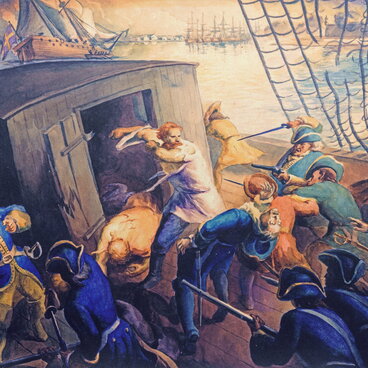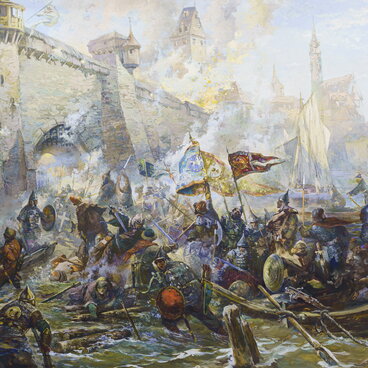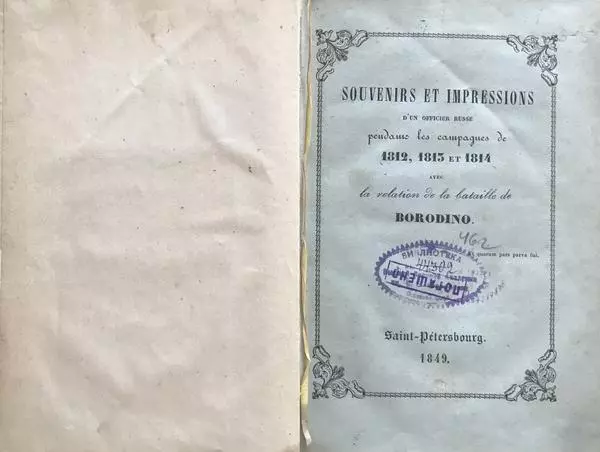In the second half of the 17th century, Tsar Alexis attempted to set up a warship flotilla to protect Russian ships trading with Persia and the route in the Lower Volga and the Caspian Sea. In June 1667, the famous forward-thinking statesman — the boyar Afanasy Lavrentievich Ordin-Nashchokin — was appointed the supervisor of shipbuilding, while two psalm readers Stepan Petrov and Yakov Poluyektov were made his assistants. Since Russia had no experience in building large warships, upon the tsar’s order, the Dutchman Johan van der Sweden who had long lived in Moscow invited shipbuilders and sailors to work in Russia.
The court village of Dedinovo on the Oka River, 25 versts away from Kolomna, was chosen as the location for the shipyard. The necessary materials included wood, resin, hemp, iron for fasteners, and charcoal for smithery. Russia was rich in all of these resources, but only wood was available locally, while all the other materials had to be delivered from various regions.
The construction of one ship required over seven hundred building blocks, as well as screw jacks, and boilers for heating resin. Since it was not possible to produce all of these resources in Russia, many of them were imported. The construction lasted 18 months.
Ships were mostly constructed by Russian craftsmen. Shipbuilding was well-developed in the regions around rivers, and there was no lack of carpenters. Smiths were invited from Pereslavl, ropemakers — from Kolomna, while sailmakers and block manufacturers were chosen from among fishermen.
By the fall of 1668, the first three-masted vessel named “Oryol” was ready. She was classified as a sea-going two-decked Dutch warship. The ship had a length of 25 m, a width of 6.5 m, and a draft of 1.5 m. “Oryol” was armed with 18 six-pound cannons and 4 three-pound cannons. Apart from that, a yacht with six cannons was built as well as two sloops, one cannon each. The acceptance commission included a “man of experience” — the sailor Ivan Savelyev from Astrakhan — who expressed a high opinion of the new ships.
The construction of three ships cost 9,321 rubles, of which a sum of 6,500 rubles was paid to foreign workers. In May 1669, a small flotilla of four ships sailed from Dedinovo to Nizhny Novgorod, and after that — down the Volga to Astrakhan. They covered this route in four months. During that time, Astrakhan was controlled by the rebel forces of Stepan Razin, and in 1670, the rebels captured the “Oryol” ship, after which the ship lay in the Kutum arm of the Volga for a long time and fell into disrepair. Other vessels were not used for many years and also became dilapidated.
The court village of Dedinovo on the Oka River, 25 versts away from Kolomna, was chosen as the location for the shipyard. The necessary materials included wood, resin, hemp, iron for fasteners, and charcoal for smithery. Russia was rich in all of these resources, but only wood was available locally, while all the other materials had to be delivered from various regions.
The construction of one ship required over seven hundred building blocks, as well as screw jacks, and boilers for heating resin. Since it was not possible to produce all of these resources in Russia, many of them were imported. The construction lasted 18 months.
Ships were mostly constructed by Russian craftsmen. Shipbuilding was well-developed in the regions around rivers, and there was no lack of carpenters. Smiths were invited from Pereslavl, ropemakers — from Kolomna, while sailmakers and block manufacturers were chosen from among fishermen.
By the fall of 1668, the first three-masted vessel named “Oryol” was ready. She was classified as a sea-going two-decked Dutch warship. The ship had a length of 25 m, a width of 6.5 m, and a draft of 1.5 m. “Oryol” was armed with 18 six-pound cannons and 4 three-pound cannons. Apart from that, a yacht with six cannons was built as well as two sloops, one cannon each. The acceptance commission included a “man of experience” — the sailor Ivan Savelyev from Astrakhan — who expressed a high opinion of the new ships.
The construction of three ships cost 9,321 rubles, of which a sum of 6,500 rubles was paid to foreign workers. In May 1669, a small flotilla of four ships sailed from Dedinovo to Nizhny Novgorod, and after that — down the Volga to Astrakhan. They covered this route in four months. During that time, Astrakhan was controlled by the rebel forces of Stepan Razin, and in 1670, the rebels captured the “Oryol” ship, after which the ship lay in the Kutum arm of the Volga for a long time and fell into disrepair. Other vessels were not used for many years and also became dilapidated.




